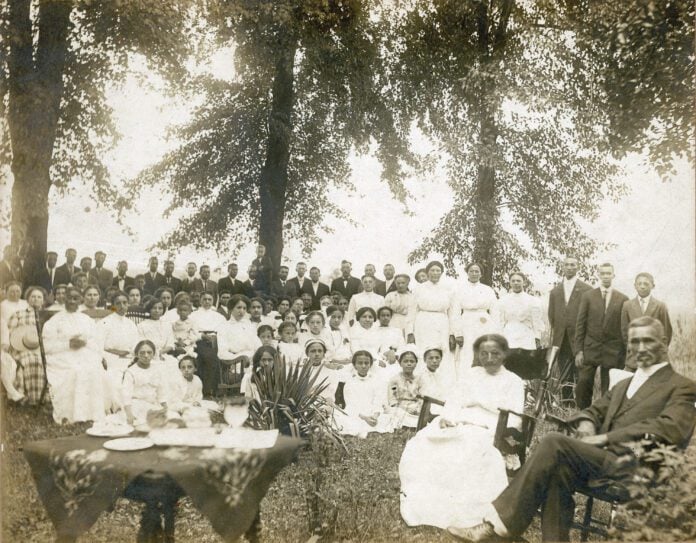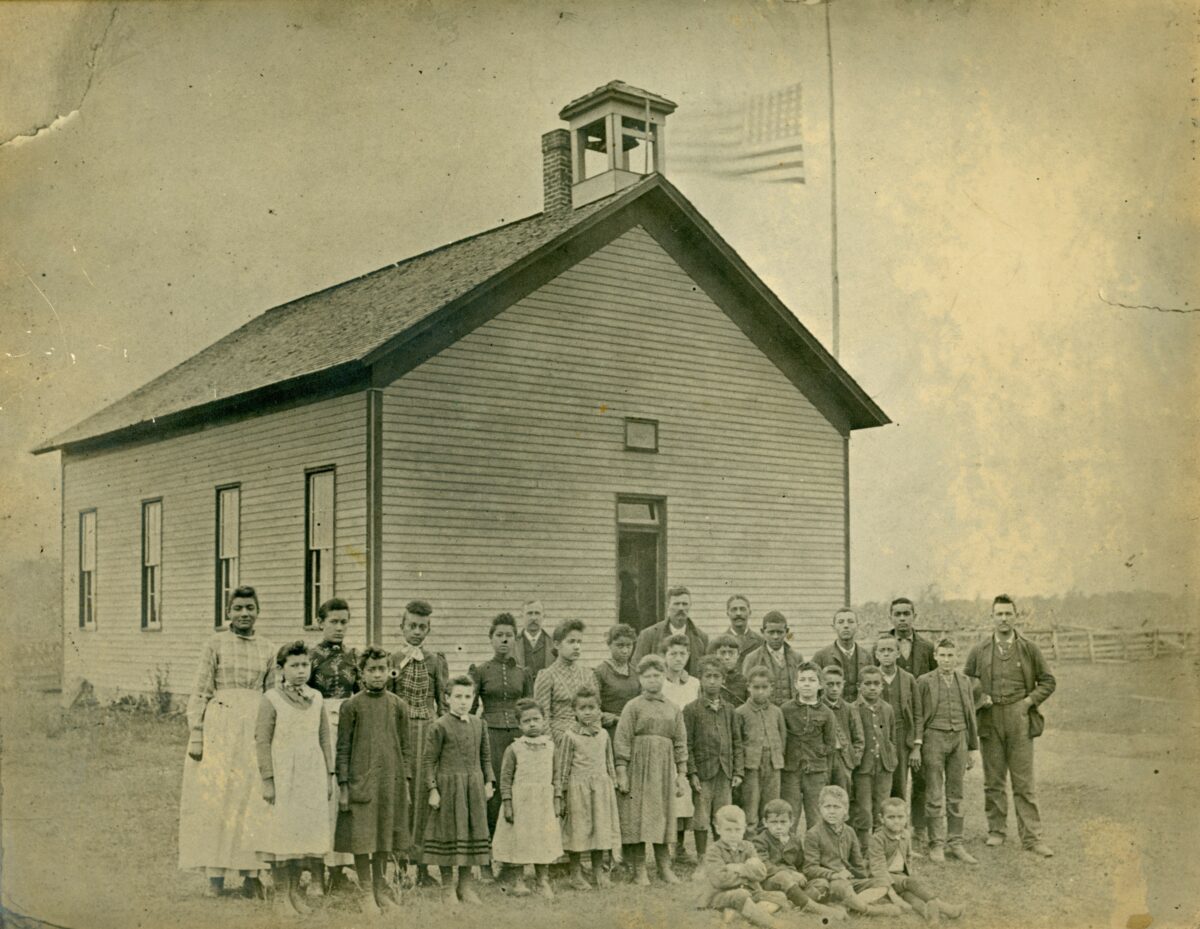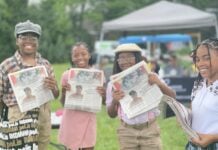
The history of an early settlement of free Black and mixed-race pioneers in Indiana will have its story told.
Before the end of slavery, free Black and mixed-race Native American pioneers and white indentured servants migrated north from North Carolina to areas in Virginia and Ohio before landing in Indiana around 1835. Settlers, most with the surname Roberts, lived and established homesteads in Atlanta, Indiana, farming the land, building homes and churches, and starting schools, said Bryan Glover, vice president of Roberts Settlement.
“It was considered to be a place where whites will be tolerant of people of color living in their surroundings,” Glover said. “I would describe it kind of as a little village, right? People who know each other have chosen to live together, and they began to build farms.”
The families in Roberts Settlement and other settlements of free people of color had more control over their destinies during a time when most Black people only found freedom either through escaping bondage or the Civil War ending, Glover said. They also had the luxury of falling back on the support of family and community and opportunities to build wealth and be successful.
However, Indiana, which became a state in 1816, was still incredibly hostile to people of color in the 1830s, and slavery was still practiced in some areas in southern Indiana, Glover said. The 1851 constitution banned Black and mulatto people from moving into the state, and Glover said the people of Roberts Settlement fought “time and time again to carve out their piece” of the so-called American Dream.
This is certainly not a story that they should keep to themselves, Glover said.

“We were some of the early people to come to Indiana, not in great numbers, but we were here, right? We were doing what these other pioneers were doing, and we want to be part of that story,” Glover said. “We want to tell these stories of these teachers, these doctors, these lawyers, these preachers, and just life on the farm and, at that time, what we know about this history.”
Susan Hall Dotson, the African American collections curator for the Indiana Historical Society, is working alongside descendants of Roberts Settlement like Glover to collect documents and photographs to not only preserve its history but to also find new ways to tell the story and expand the conversation about the free people of color who built their lives here.
“They were legally able to buy land from the government. Was it the best land? Of course not — just the nature of the beast of the day,” Dotson said. “But they turned lemons into lemonade and had families, and worshiped, and educated themselves, and farmed, and had their own agricultural economic flow internally and externally in the communities where they live around the state.”
As the African American Collections Curator, Dotson acquires collections made from physical documents, photos, audio and video relating to African American people whose lives intersected with Indiana — whether they were born, lived, worked or died in the state, she said.
Preserving the history of Roberts Settlement is essential to changing the pre-existing narrative that Black people and people of color did not contribute to the development of Indiana, Dotson said. In reality, there were Black and mixed-race people who were free, educated landowners and teachers, Dotson said. Roberts Settlement is proof of that.
“I guess you could say their demise as an active settlement is no different than so many other small towns and townships where people left to go to industrial space to go to the bigger cities for work and for educational purposes,” Dotson said. “But the roots are still strong, and the descendants are still there, and they have an active cemetery on the grounds and a chapel called Roberts chapel.”
The settlement also recently celebrated its 100th consecutive and continuous family homecoming celebration in 2023, Dotson said. Although they do not still own and farm the entirety of the original acreage purchased in 1835, they never abandoned the space.
Dotson can pursue this work with the settlement thanks to the Wilma Gibbs Moore Fellowship, which is named for the late researcher and archivist who came before Dotson and provides a $5,000 stipend to support “new humanities research that explores anti-Black racial injustice and structural racism in Indiana that considers how Black Hoosiers have responded.”
Dotson applied for and was awarded the fellowship in 2023.
Dotson’s vision for the project on Roberts Settlement is to look at the history of the settlement through the eyes of young people; to tell the stories of the past through the descendants who are alive today. The Indiana Historical Society provides a safe place to preserve the collection, but the primary audience for telling the story and keeping the history alive is young people, she said.
Roberts Settlement hosts tours and talks on the grounds and offers presentations to local schools in the area. Glover said they are currently raising money to preserve the Roberts Chapel — built in 1858 — and create a permanent outdoor exhibit. For more information, visit robertssettlement.org or indianahistory.org.
Contact staff writer Chloe McGowan at 317-762-7848. Follow her on Twitter @chloe_mcgowanxx.
Chloe McGowan is the Arts & Culture Reporter for the Indianapolis Recorder Newspaper. Originally from Columbus, OH, Chloe graduated with a degree in journalism from The Ohio State University. She is a former IndyStar Pulliam Fellow, and her previous work includes freelancing for Indy Maven, Assistant Arts & Life Editor for The Lantern, and editorial assistant at CityScene Media Group. Chloe enjoys covering all things arts and culture — from local music, visual art, dance, theater and film, as well as minority-owned businesses. In her free time, Chloe enjoys reading, cooking and keeping her plants alive.




